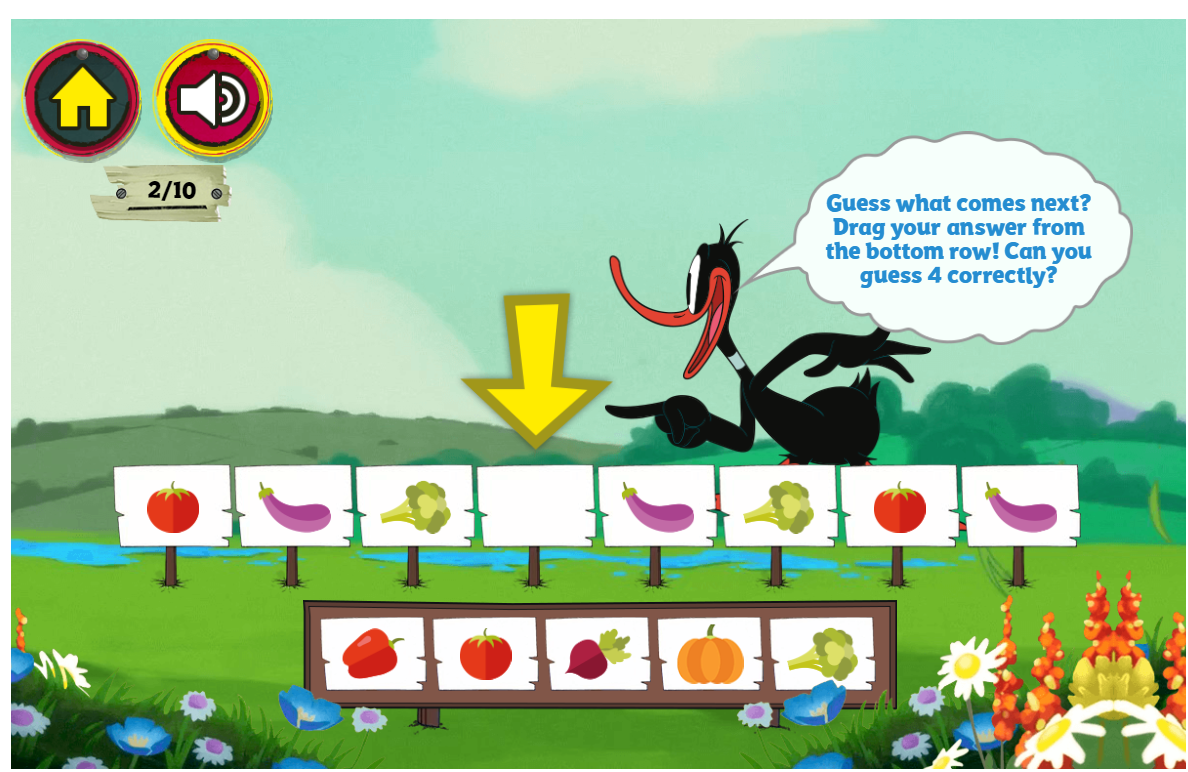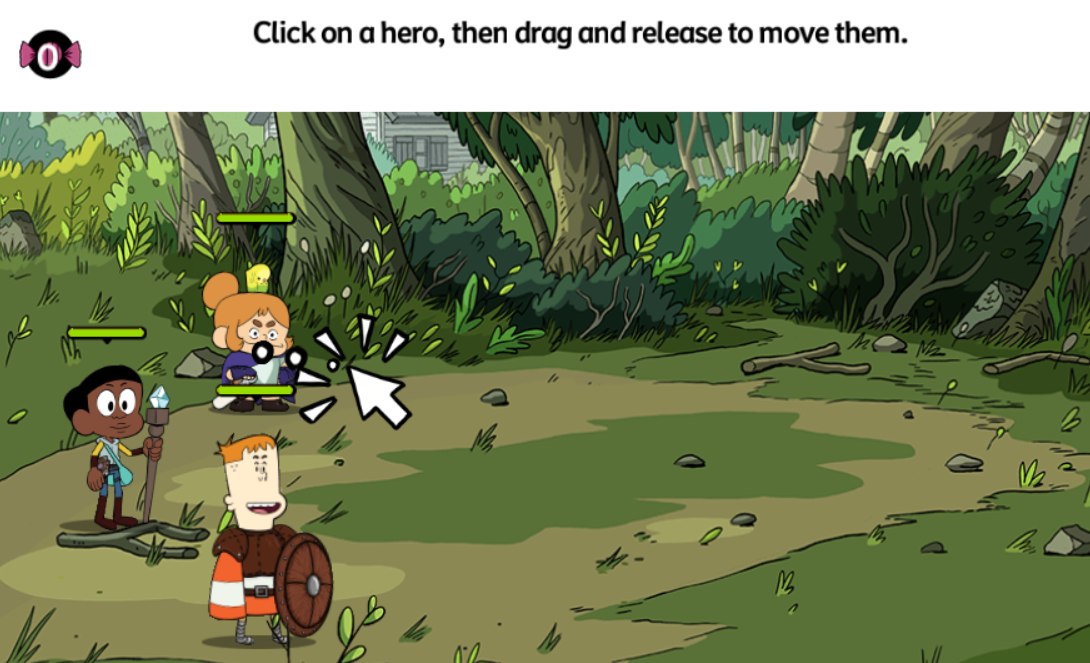| 1 |
Mouse interactions are as simple as possible |
The mouse interactions are as simple as possible guideline suggests that designers should design games or products in a way that minimizes the complexity of interactions using a mouse. This can involve designing the game or product to use simple and intuitive mouse controls, such as clicking or dragging, rather than more complex or unfamiliar gestures or movements. By designing the mouse interactions to be as simple as possible, designers can create a more accessible and user-friendly experience for players, and can help to ensure that players are able to effectively interact with the game or product. It is important to consider the specific goals and objectives of the game or product, as well as the needs and abilities of the target audience, when designing the mouse interactions. By designing mouse interactions that are as simple as possible, designers can create a more enjoyable and satisfying experience for players. |
—
|
—
|
no
|
| 2 |
One-click interfaces are more common than other interactions (e.g., dragging, double-click) |
The one-click interfaces are more common than other interactions (e.g., dragging, double-click) guideline suggests that designers should design games or products in a way that relies more heavily on one-click interfaces, rather than other types of interactions such as dragging or double-clicking. This can involve designing the game or product to use simple and intuitive one-click controls, rather than more complex or unfamiliar gestures or movements. By designing the game or product to use one-click interfaces more commonly, designers can create a more accessible and user-friendly experience for players, and can help to ensure that players are able to effectively interact with the game or product. It is important to consider the specific goals and objectives of the game or product, as well as the needs and abilities of the target audience, when designing the interface interactions. By designing interfaces that rely more heavily on one-click interactions, designers can create a more enjoyable and satisfying experience for players. |
—
|
—
|
no
|
| 3 |
Mouse buttons have the same functionality |
The mouse buttons have the same functionality guideline suggests that designers should design games or products in a way that the left and right mouse buttons have the same functionality. This can involve designing the game or product to use the left and right mouse buttons in the same way, or by providing options or settings that allow players to customize the functionality of the mouse buttons. By designing the mouse buttons to have the same functionality, designers can create a more intuitive and user-friendly experience for players, and can help to ensure that players are able to effectively interact with the game or product. It is important to consider the specific goals and objectives of the game or product, as well as the needs and abilities of the target audience, when designing the functionality of the mouse buttons. By designing the mouse buttons to have the same functionality, designers can create a more enjoyable and satisfying experience for players. |
—
|
—
|
no
|
| 4 |
Touch screens have been used for young children |
The touch screens have been used for young children guideline suggests that designers should design games or products in a way that they can be used on touch screen devices, particularly for young children. This can involve designing the game or product to use simple and intuitive touch controls, such as tapping or swiping, rather than more complex or unfamiliar gestures or movements. By designing games or products for use on touch screens, designers can create a more accessible and user-friendly experience for young children, who may find it easier to interact with touch screens than with other types of input devices. It is important to consider the specific goals and objectives of the game or product, as well as the needs and abilities of the target audience, when designing the game or product for use on touch screens. By designing games or products for use on touch screens, designers can create a more enjoyable and satisfying experience for young children. |
—
|
—
|
no
|
| 5 |
Items are large enough and distanced from each other in young children’s games |
The items are large enough and distanced from each other in young children's games guideline suggests that designers should design games or products in a way that the items or elements within the game or product are large enough and spaced apart appropriately for young children. This can involve designing the items to be large enough for young children to easily see and interact with, and ensuring that there is enough space between the items to prevent confusion or overlap. By designing the items in this way, designers can create a more user-friendly and accessible experience for young children, and can help to ensure that they are able to effectively interact with the game or product. It is important to consider the specific goals and objectives of the game or product, as well as the needs and abilities of the target audience, when designing the items and their size and spacing. By designing the items in a way that is appropriate for young children, designers can create a more enjoyable and satisfying experience for young children. |

|
https://www.boomerangtv.co.uk/games/looney-tunes-cartoons-farmyard-fun
|
no
|
| 6 |
Dragging is replaced by click/place functionality in young children’s games |
The dragging is replaced by click/place functionality in young children's games guideline suggests that designers should design games or products in a way that replaces dragging interactions with click/place functionality for young children. This can involve designing the game or product to use simple and intuitive click/place controls, rather than more complex or unfamiliar dragging gestures or movements. By replacing dragging with click/place functionality, designers can create a more accessible and user-friendly experience for young children, and can help to ensure that they are able to effectively interact with the game or product. It is important to consider the specific goals and objectives of the game or product, as well as the needs and abilities of the target audience, when designing the interactions for young children's games. By replacing dragging with click/place functionality in young children's games, designers can create a more enjoyable and satisfying experience for young children. |

|
http://www.cs.ucy.ac.cy/projects/readistance
|
yes
|
| 7 |
Mouse buttons are used for extended period |
The mouse buttons are used for extended periods guideline suggests that designers should design games or products in a way that requires players to use the mouse buttons for extended periods of time. This can involve designing the game or product to include tasks or activities that require players to use the mouse buttons continuously or frequently, or by designing the game or product in a way that requires players to use the mouse buttons for extended periods in order to complete certain tasks or challenges. By designing the game or product in this way, designers can create a more engaging and immersive experience for players, and can help to ensure that players are able to effectively interact with the game or product. It is important to consider the specific goals and objectives of the game or product, as well as the needs and abilities of the target audience, when designing the game or product to require the use of the mouse buttons for extended periods. By designing the game or product in a way that requires the use of the mouse buttons for extended periods, designers can create a more enjoyable and satisfying experience for players. |
—
|
—
|
no
|
| 8 |
Tangible interfaces have been used |
The tangible interfaces have been used guideline suggests that designers should design games or products in a way that incorporates tangible interfaces, or physical interfaces that allow players to interact with the game or product through touch or manipulation. This can involve designing the game or product to use physical objects or devices, such as touch screens, handheld controllers, or tangible interfaces that can be placed on a tabletop or other surface, in order to control and interact with the game or product. By designing the game or product to incorporate tangible interfaces, designers can create a more immersive and engaging experience for players, and can help to make the game or product more accessible and user-friendly. It is important to consider the specific goals and objectives of the game or product, as well as the needs and abilities of the target audience, when designing the game or product to incorporate tangible interfaces. By designing the game or product to incorporate tangible interfaces, designers can create a more enjoyable and satisfying experience for players. |
—
|
—
|
no
|
| 9 |
Children actively participate in discovery process based on direct manipulatives |
The children actively participate in discovery process based on direct manipulatives guideline suggests that designers should design games or products in a way that encourages children to actively participate in the discovery process through the use of direct manipulatives. Direct manipulatives are physical objects that can be used to represent or model concepts or ideas, and can be manipulated directly by children in order to explore and learn about different concepts or ideas. By designing games or products that incorporate direct manipulatives, designers can create a more immersive and engaging learning experience for children, and can help to support and enhance the learning goals of the game or product. It is important to consider the specific goals and objectives of the game or product, as well as the needs and abilities of the target audience, when designing the game or product to incorporate direct manipulatives. By designing games or products that encourage children to actively participate in the discovery process through the use of direct manipulatives, designers can create a more effective and meaningful learning experience for children. |
—
|
—
|
no
|
| 10 |
Large input devices have been used to encourage collaboration |
The large input devices have been used to encourage collaboration guideline suggests that designers should design games or products in a way that incorporates large input devices in order to encourage collaboration among players. Large input devices are physical devices or interfaces that are designed to be used by multiple players at the same time, and can include things like touch screens, tabletop interfaces, or large displays that can be used by multiple players to interact with the game or product. By designing games or products that incorporate large input devices, designers can create a more immersive and engaging experience for players, and can encourage collaboration and teamwork among players. It is important to consider the specific goals and objectives of the game or product, as well as the needs and abilities of the target audience, when designing the game or product to incorporate large input devices. By designing games or products that incorporate large input devices in order to encourage collaboration among players, designers can create a more enjoyable and satisfying experience for players. |
—
|
—
|
no
|
| 11 |
Different interfaces have been used to emphasise different actions |
The different interfaces have been used to emphasize different actions guideline suggests that designers should design games or products in a way that uses different interfaces to emphasize or highlight different actions or functions within the game or product. This can involve using different types of input devices or interfaces, such as touch screens, physical buttons, or motion sensors, to emphasize different actions or functions within the game or product. By using different interfaces to emphasize different actions, designers can create a more intuitive and user-friendly experience for players, and can help to ensure that players are able to effectively interact with the game or product. It is important to consider the specific goals and objectives of the game or product, as well as the needs and abilities of the target audience, when designing the game or product to use different interfaces to emphasize different actions. By using different interfaces to emphasize different actions within the game or product, designers can create a more enjoyable and satisfying experience for players. |

|
https://www.cartoonnetworkhq.com/games/craig-of-the-creek-legend-of-the-goblin-king/play
|
no
|
 Physical Development
Physical Development

